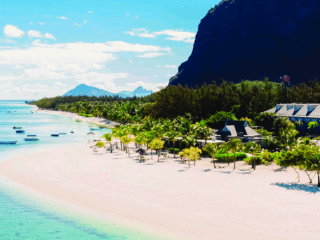
Your guide on building a house in a fire risk zone
08.06.20By Malika Junaid
Wildfires are a common occurrence in California and some parts of the world. They typically appear towards the end of a hot and dry summer. With rainfall low, temperatures and winds high, the dry spell prolonging, more fires will undoubtedly follow. This begs the question: How to protect homes in high fire risk zones?
By fireproofing, you can avoid future loss and damage to property and life. There is no guarantee that your abode will be 100% fireproof, but taking preventive measures gives your home a fighting chance.
It’s down to using the right materials, the right landscaping and smart detailing. I’ve compiled a list of key architect-approved elements:
- Use non-combustible material for internal frames
Noncombustible materials such as fiber cement, brick, stone and steel should be used to construct external walls. These materials are more affordable than traditional materials, but more importantly, have a lot more resistance than untreated wood and vinyl.
- Upgrade windows
Insulated glass windows generally hold on longer than standard laminated glass windows. I recommend using smaller window panes that have better fireproofing capabilities. Refrain from installing acrylic skylights as well as they melt pretty easily.
- Seal windows and doors
By sealing the frames of doors and windows you will reduce the risk of embers getting into your home. A home if well-sealed can withstand fire. I recommend using noncombustible fire shutters made out of aluminum, bronze or steel on all windows and doors in areas where the fire risk is extremely high.
- Keep the design simple
If the shape of the roof or the house is complicated, it generally offers more places for embers to get into and stay inside. Try and minimise the areas of the roof that are likely to accumulate embers by sealing the eaves and installing gutter guards that are noncombustible.
- Paint pergolas and decking with fireproof paint
Pergolas and decking are often made from highly inflammable traditional timber, so you may want to build these structures with composite instead, which is less flammable. If you do use wood, you must treat your decks and pergolas against fire. Also position the Pergolas and decking structurally away from home.
A defensible space is your first line of defense against a wildfire. The purpose of this space is to slow the spread of the wildfire toward or from your home and allow a safe area for firefighters to be able to beat back the fire.
- Clear the fuel
Maintain a ‘fuel-free’ area of landscaping around the home. It is recommended to remove dead or flammable vegetation within 15 feet of a home’s walls. Keep the grass mowed, creating a defensive zone of 30 feet from all structures. Thin the pine trees on your property to prevent the fire from jumping from tree top to tree top. Prune their branches and small shrubs to be removed from under trees.
- Select plants that are high-water-bearing
Plants that have higher levels of water content may prevent the fire from spreading quickly. You can also keep the surroundings wet to keep the plant bed moist. A sprinkler system in the garden can keep the plant bed damp, reducing the intensity of the fire in case one breaks out.
- Unclutter the gutter
Keep your gutters clean to remove highly inflammable natural materials such as dry leaves and branches. You can choose to place non-combustible mesh over the gutter to avoid flammable and decaying plants and leaves.
Not a lot of people design their dream homes with regards to the wildland-urban interface and the dangers of imminent fires until something tragic sees the light of day. Don’t be one of them. Just keep the above-mentioned elements in your home building plan and you can outlast wildfire’s lapping flames.
Learn more here: https://www.mdesignsarchitects.com/
Abode Affiliates
COPYRIGHT © Abode2 2012-2024






















































































































































































































